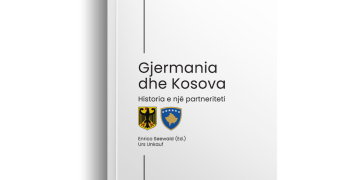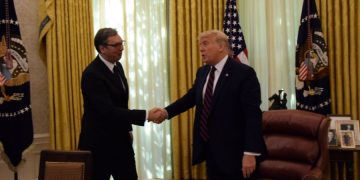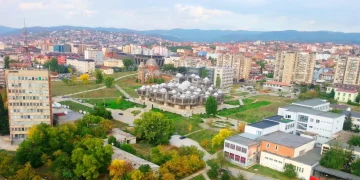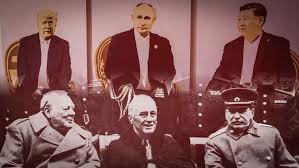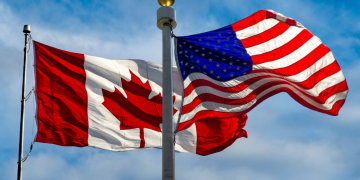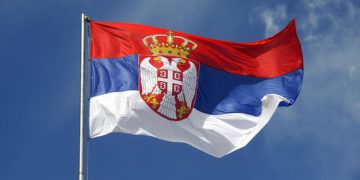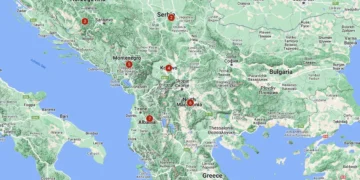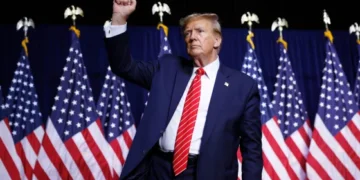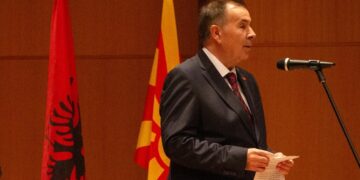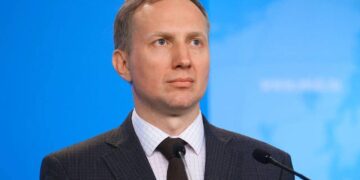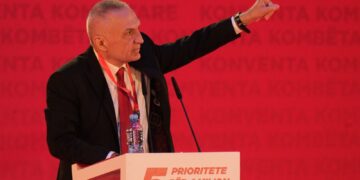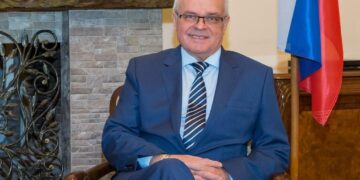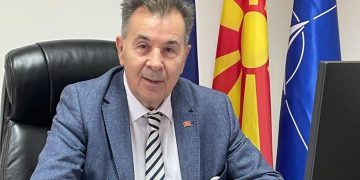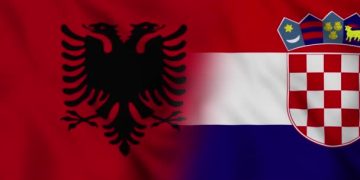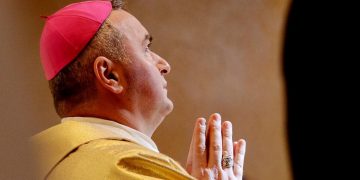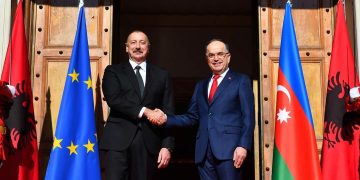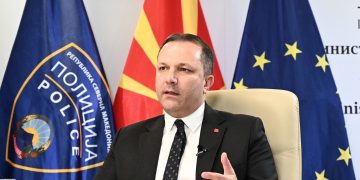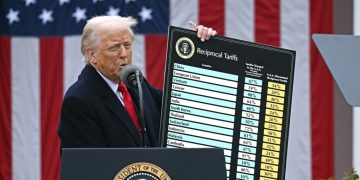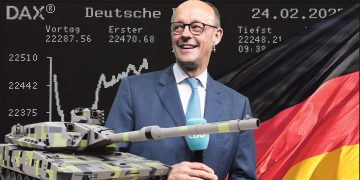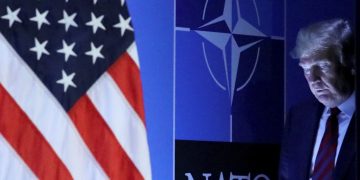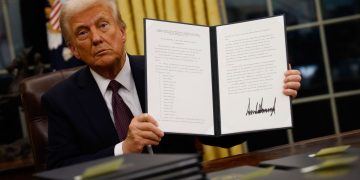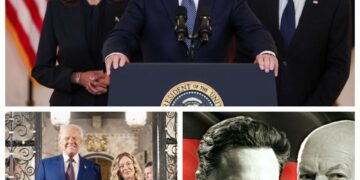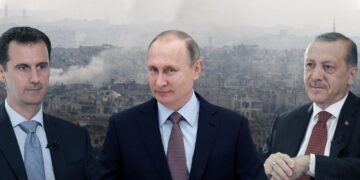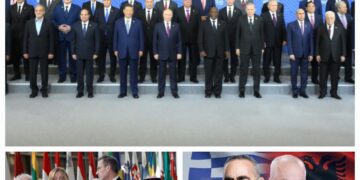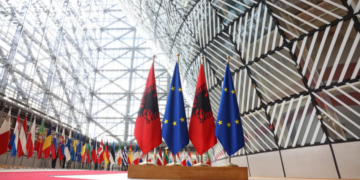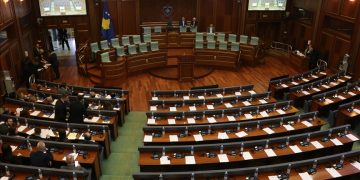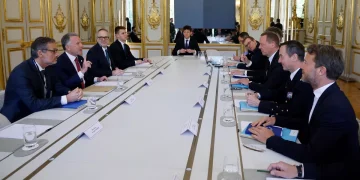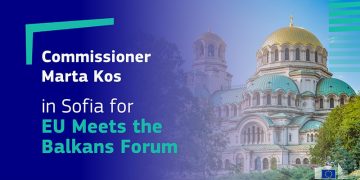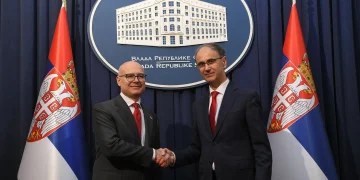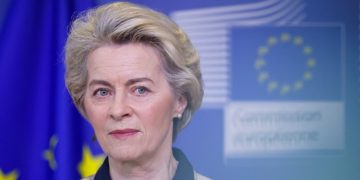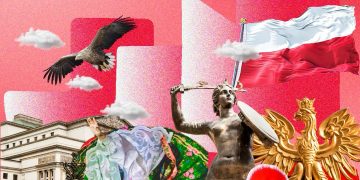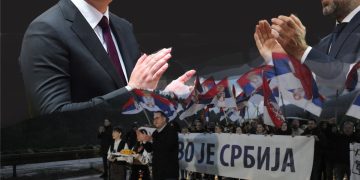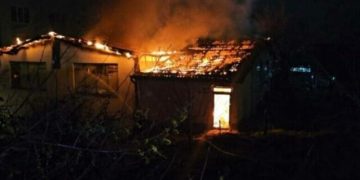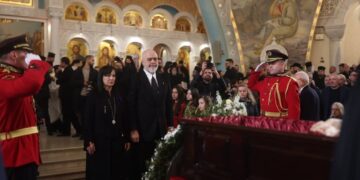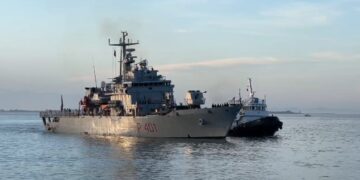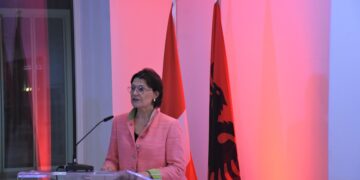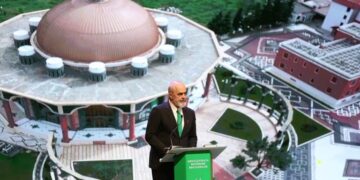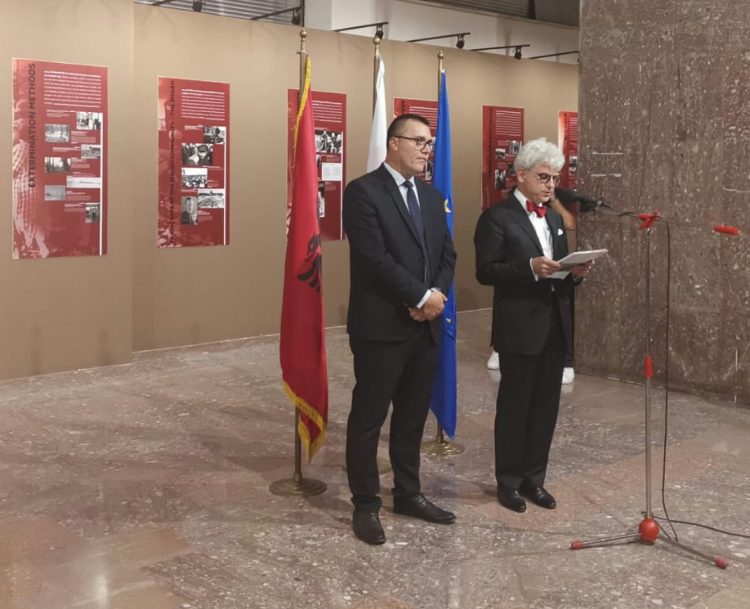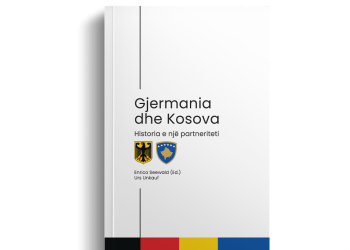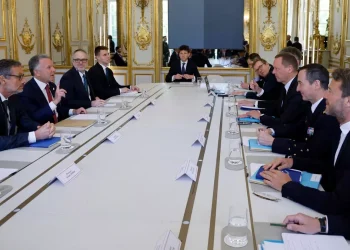“It is shocking for my compatriots to listen to claims that it was Poland that started World War II, as well as it is outrageous to hear about Holocaust denial. Mistakenly, again and again some try to put an equation mark between the occupier and the occupied, the oppressor and the oppressed, the executioner and the victim,” said Ambassador Bachura
TIRANA – “Pictures speak louder than thousand words. The exhibition before you is a collection of testimonies of the Polish fight against totalitarianisms, exceptional love for freedom, heroism of both soldiers and civilians alike, brotherhood of arms and solidarity with other nations against occupiers–all deeds worth remembering,” has said the Polish Ambassador to Albania, Karol Bachura.
Ambassador Bachura made that comment in his remarks at the opening of the exhibition entitled “Fighting and Suffering” at the National Historical Museum in Tirana on Tuesday on the occasion of the 80th Anniversary of the outbreak of the Second World War.
“The memory of the tragedy of WW II unites generations of Poles and is an expression of respect for the sacrifice of our ancestors. It should also unite mankind in remembrance of the horrors of WWII in order not to repeat them again in any form,” said Mr. Bachura to the guests among whom representatives of the state administration, parliament, members of the religious communities, guests from the diplomatic corps, and other invitees.
In addition he said that he was privileged to inform of a – fresh off the press, historical Albanian publication entitled “Poland – victim of WW II” written by professor Spiro Mehilli.”The book contains more thorough information on Poland and the WWII. Its findings are based on historical publications from all around the globe,” said Polish Ambassador Bachura in the speech that follows:
At dawn on September 1, 1939, the German Reich’s attack on Poland began World War II. Its tragic gloom first overshadowed Europe, and later escalated to the whole world involving over 60 countries, leading to the greatest catastrophe in the history of mankind by bringing a death toll to over 60 million out of which 6 million in Poland alone. The cataclysm of the most terrible of wars lasted almost 6 years and consumed the lives of mainly civilians, uncovering the darkest of sides of human nature.
A week before the outbreak of war, on August 23, Hitler and Stalin formed an agreement, commonly known as the Molotov-Ribbentrop Pact. It contained a secret protocol on the division of spheres of influence in Central and Eastern Europe including partition of Poland. On September 1, the Nazi Germany army attacked Poland, and 80 years ago today, the Polish Eastern border was invaded by the Soviet troops.
In September 1939 Poland fought alone against the two totalitarian powers and was the first country to openly resist Hitler’s destructive intentions. Having no military support, the Polish units could not stop the invaders’ massive attacks. For 35 days Poland was fighting on its own. It was defeated and occupied, but it never surrendered. During the war Poles created a unique “Underground State” overseen from the eve of 17 of September onwards by the government in exile – government which functioned in London up until 1990. The totalitarian alliance brought to the Poles fight and suffering, no Polish family was immune to loss. Both Nazi and Soviet occupation which lasted until the invasion of German Reich on the USSR in mid of 1941 brought with it among other atrocities: the Katyn massacre of 1940 in which over 20 thousand Polish POW were slaughtered by the Soviet Secret Police; Nazi concentration camps on the territory of occupied Poland such as the infamous Auschwitz-Birkenau; almost total annihilation of the pre-war largest Jewish community in Europe (half of the 6 million Poles dead during the war were Polish Jews); the tragedy of the Warsaw Uprising in which my city was totally devastated and turned into a sea of ruins and many more.
Therefore it is shocking for my compatriots to listen to claims that it was Poland that started World War II, as well as it is outrageous to hear about Holocaust denial. Mistakenly, again and again some try to put an equation mark between the occupier and the occupied, the oppressor and the oppressed, the executioner and the victim.
However facts speak for themselves. The Shoah took the lives of around 80% of Jewsh population in Europe, around 6 milion Jews perished and half of them were Polish citizens. There were 35 million inhabitants in Poland before the outbreak of the II WW. After its end only 23 million people remained in the countries new borders (6 million perished in the war, while another 6 million Poles were globally dispersed from Vladivostok to Vancouver).
During the war years, Poles scattered throughout Europe constituted the fifth largest army. The Polish soldiers played an essential role in the liberation of Italy, France, Belgium and the Netherlands. The Polish Army fought in Africa. Polish pilots had extraordinary merits in the Battle of Britain. The Polish navy fought at Narvik, on the Atlantic, the Mediterranean and the Aegean seas. The marks of graves of Polish soldiers are present on the vast lines of II WW fronts.
Voices of criticism than recently appeared here and there referring to the Polish commemnorations seem to follow in vast majority the rethorical lines from the brochure published in 1946 by commrade Stalin himself entitled “Falsifiers of history”, and as such require no further comment.
We, Poles are aware of the high sacrifice of the Red Army soldiers that, along with the First Polish People’s Army pushed back the Nazi occupiers by marching via Polish territory on the way to Berlin. According to the obligatory Polish law on war graves and military cemeteries dated from 1930’s the Polish state is obliged to respect the memory of all soldiers fallen on its land regardless of nationality or religion as well as to take care of all military cemeteries. This refers both to the places of burial of the 18 thousand POW Soviet soldats from the Polish-Bolshevik war of 1920 who died due to various diseases such as cholera or the Spanish flu, as well as the Soviet troops that perished during the II WW on Polish soil. Nevertheless, without denying the Soviet contribution to the defeat of Nazism in Europe and huge loss of human lives, we must not close our eyes to the fact that the Soviet Army brought with it also a half of a century of repression to the peoples of Central and Eastern Europe. Respect for the fallen soldiers does not equal obligations to honor statues or monuments outside places of burial devoted either to Polish communists or Soviet leaders, generals, etc. who forcefully strengthened the communist grip over my country in the 45 years that followed WW II.
Being in vast majority a Catholic country we are aware that according to the Christian spirit one should forgive. In 1965, twenty years after the end of WW II, the Polish Catholic bishops wrote a pastoral letter of reconciliation to their German brothers in which they declared: “We forgive and ask for forgiveness”. However forgiveness does not mean forgetting, but without pardoning it is difficult to build a common future.
Pictures speak louder than thousand words. The exhibition before you is a collection of testimonies of the Polish fight against totalitarianisms, exceptional love for freedom, heroism of both soldiers and civilians alike, brotherhood of arms and solidarity with other nations against occupiers–all deeds worth remembering. The memory of the tragedy of WW II unites generations of Poles and is an expression of respect for the sacrifice of our ancestors. It should also unite mankind in remembrance of the horrors of WWII in order not to repeat them again in any form.
In addition, it is also my privilege to inform you of a – fresh off the press, historical Albanian publication entitled “Poland – victim of WW II”. Some copies will be available tonight for purchase along with dedication from the author professor Spiro Mehilli. The book contains more thorough information on Poland and the WWII. Its findings are based on historical publications from all around the globe.
And finally, thanking once again the Director of the National Historical Museum Mr. Dorian Koci and his devoted staff /ADN


